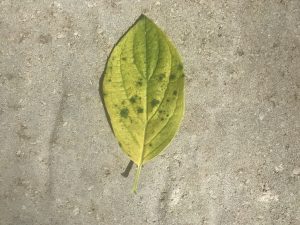Not known Factual Statements About Hydrangea Leaves Turning Yellow
Little Known Facts About Hydrangea Leaves Turning Yellow.
Table of ContentsIndicators on Hydrangea Leaves Turning Yellow You Should KnowA Biased View of Hydrangea Leaves Turning YellowWhat Does Hydrangea Leaves Turning Yellow Mean?Facts About Hydrangea Leaves Turning Yellow Revealed
Hydrangea plants are recognized for their stunning blooms, but occasionally their leaves can transform yellow. This is normally a sign that something is wrong and the plant needs your help. There are a number of possible reasons for yellow leaves on Hydrangeas, and fortunately a lot of them are very easy to take care of. Below we'll cover the most typical root causes of Hydrangea leaves turning yellow and just how to fix them.Hydrangea leaves turning yellow can be a reason for problem. Hydrangea leaves normally turn yellow when the plant is overwatered.
When the roots of a plant are immersed in water for extended periods, they start to asphyxiate and rot. This process cuts off the origins' oxygen supply, triggering the leaves to transform yellow and eventually die. Overwatering can additionally result in various other issues such as fallen leave drop, root damage, and fungal development.
If you assume your Hydrangea is overwatered, the finest service is to allow the dirt dry completely prior to sprinkling again. It's also a good idea to check the water drainage of your pot or yard bed and make sure that water is not pooling around the plant's origins. Hydrangea plants require well-drained dirt to thrive.
All About Hydrangea Leaves Turning Yellow
You ought to additionally guarantee that you are not watering your Hydrangea too usually. Watering once a week ought to suffice, and regularly if the climate is warm and dry. Hydrangea leaves can also turn yellow if the plant is not obtaining enough water. This occurs when the plant does not receive enough water, and the soil begins to dry out.
:max_bytes(150000):strip_icc()/GettyImages-13748759001-8a80ca41bf6b46ffa27f748339a58287.jpg)
This is known as "plant food melt," It occurs when the plant's origins are subjected to as well much fertilizer. Other indicators of fertilizer burn include brown or yellow fallen leaves, wilting, and stunted development.
This will help eliminate any excess plant food from the origins of the plant. It's also a great concept to reduce the quantity of fertilizer you are using.
5 Easy Facts About Hydrangea Leaves Turning Yellow Described

If your Hydrangea is infested with bugs, dealing with the plant with neem or gardening oil is the very best solution. It's also good to eliminate any type of afflicted leaves from the plant. You can do this by hand or with a pair of pruning shears. It's likewise a great concept to inspect the plant routinely for insects and remove them as quickly as you see them.
To stay clear of spreading out the illness, make certain to decontaminate your scissors prior to reducing any kind see this page of ends. Hydrangea leaves can additionally transform yellow if the temperature level emphasizes the plant. This generally takes place when the plant is subjected to severe chilly or heat. The fallen leaves of the plant will certainly transform yellow and begin to leave.
If the temperature emphasizes your Hydrangea, you need to move the plant to a location where it will be secured from the severe cool or warm. You can additionally try to supply the plant with some partial color if subjected to guide sunlight. You can also try including compost around the plant base to aid control the temperature level.
Hydrangea Leaves Turning Yellow Can Be Fun For Anyone
When the plant's origins are submerged in water for also long, they begin to rot. One of the most typical origin rot symptoms is yellowing fallen leaves, as the fungus avoids the origins from absorbing nutrients from the soil.
Examine the origins of your Hydrangea if it has origin rot. If some healthy origins are left, you can try to conserve the More Bonuses plant by replanting it in a brand-new pot with fresh soil.
If your Hydrangea is greatly impacted by origin rot, beginning with a brand-new plant is best. As Hydrangeas age, their fallen leaves will gradually transform yellow and brownish before falling off the plant.
You can help the plant by ensuring it is obtaining sufficient water and nutrients. One opportunity is that the plant is not obtaining enough water.